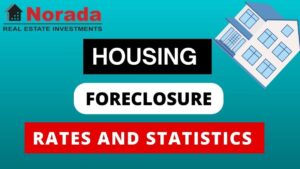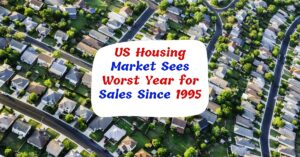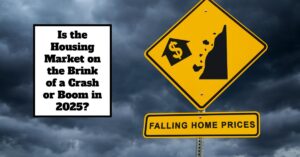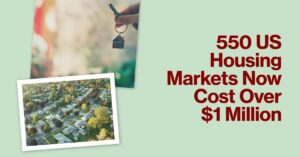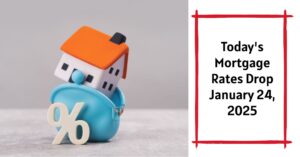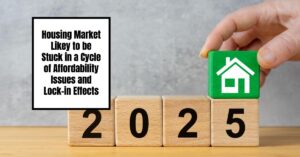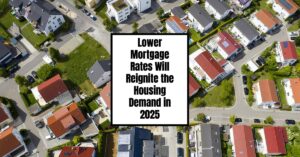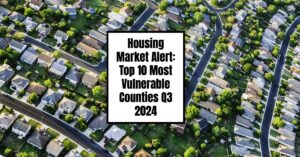It's crucial to understand what's happening in the housing market, and the latest news on foreclosures is pretty interesting. The short answer? U.S. foreclosure activity declined in 2024, continuing a downward trend from previous years. This might seem like a sigh of relief after the rollercoaster ride the housing market has been on, but as someone who's followed these trends for a while, I know it's essential to dig a little deeper. We need to look past the headlines to truly understand what these numbers mean for homeowners, investors, and the overall health of the economy.
U.S. Foreclosure Activity Declines: A Sign of Stability or a Temporary Lull?
The Numbers Don't Lie (But They Need Context)
The data from ATTOM, a leading real estate data provider, paints a pretty clear picture:
- Overall filings: In 2024, there were 322,103 U.S. properties with foreclosure filings, which include default notices, scheduled auctions, and bank repossessions. That's down 10% from 2023, and a massive 89% drop from the peak in 2010.
- Percentage of properties affected: In 2024, just 0.23% of all U.S. housing units saw a foreclosure filing. This is a small drop from 0.25% in 2023, and again, a big fall from the 2.23% peak in 2010.
- Foreclosure Starts: Lenders started the foreclosure process on 253,306 properties in 2024. While this is up 174% from 2021, it’s a decrease of 6% from 2023 and 88% lower than the 2009 peak.
- Bank repossessions (REO): 36,505 properties were repossessed by lenders in 2024. This is down 13% from 2023 and an enormous 97% drop from the 2010 peak of over one million REOs.
- Monthly Declines: December 2024 also showed a decline in foreclosures. There were 28,632 U.S. properties with foreclosure filings, down 3% from November and 6% from the previous year.
Here's a quick look in a table for easier digestion:
| Metric | 2024 | Change from 2023 | Change from 2019 | Change from 2010 Peak |
|---|---|---|---|---|
| Total Foreclosure Filings | 322,103 | -10% | -35% | -89% |
| Foreclosure Starts | 253,306 | -6% | -25% | -88% |
| Bank Repossessions (REO) | 36,505 | -13% | -75% | -97% |
These are pretty impressive declines when you look at the big picture. I remember the aftermath of the 2008 financial crisis, it felt like every other house in some neighborhoods had a foreclosure sign in the yard. So, these numbers are very encouraging.
Why the Decline?
So, why are we seeing these lower foreclosure rates? Here are my thoughts based on my experience and observations of the market:
- Stronger Lending Practices: In the years after the 2008 crisis, lending standards became much stricter. Banks are now more careful about who they lend money to, making it less likely people will get loans they can't afford. This is a huge shift. In the past, we had “liar loans” and other risky practices; now, it's much more challenging to get a mortgage without proof of income and solid credit.
- Homeowner Resilience: Many homeowners have learned a valuable lesson from the previous downturn. They seem more proactive about managing their finances, and are more willing to reach out for help if they start to struggle. I've also noticed there's been a lot of emphasis on financial literacy lately. Programs and resources that teach people how to budget better and manage debt are paying off, I believe.
- Government Intervention: While not always popular, programs aimed at helping homeowners during financial hardship have had an impact. These programs can help people avoid foreclosure if they meet certain criteria. For example, things like loan modifications and other options can provide some breathing room.
- The Overall Economy: While there are always some fluctuations, the overall economy has been reasonably steady. We haven't seen the kind of dramatic economic downturn that could trigger a huge wave of foreclosures. Interest rates have remained manageable, and unemployment has remained relatively low. People need jobs to pay mortgages, and thankfully, we've been largely okay on that front.
- Appreciation of Home Values: Home prices have generally increased in the last few years. This means even if someone is struggling, they might be able to sell their home and pay off the mortgage, avoiding foreclosure entirely. This situation gives homeowners more options. I personally know several people who were able to sell for a profit when they were facing financial issues, instead of having to go through foreclosure.
A Deeper Dive: State and Metro-Level Insights
While the national picture is encouraging, it's essential to look at specific areas to understand the full story.
States with the Most Foreclosure Starts in 2024:
- California (29,529)
- Florida (29,239)
- Texas (28,946)
- New York (14,436)
- Illinois (13,082)
It's not too surprising that California, Florida, and Texas show up on this list as these are the three most populous states in the country.
States with the Most REOs (Bank Repossessions) in 2024:
- California (3,466)
- Illinois (2,858)
- Pennsylvania (2,828)
- Michigan (2,629)
- Texas (2,501)
Again, you'll notice the larger states tend to appear in these lists.
States with the Highest Foreclosure Rates in 2024:
This is where it gets interesting. It's not just about the number of foreclosures, it’s about the rate, which gives a more accurate sense of the problem.
- Florida (1 in every 267 housing units)
- New Jersey (1 in every 267 housing units)
- Nevada (1 in every 273 housing units)
- Illinois (1 in every 278 housing units)
- South Carolina (1 in every 304 housing units)
Even though California has high overall numbers, its sheer size means its foreclosure rate is lower than states like Florida, New Jersey, and Nevada. This really underscores the importance of looking at rates and not just raw numbers.
Metropolitan Areas with the Most Foreclosure Starts in 2024
(Population greater than 1 million):
- New York, New York (15,327)
- Chicago, Illinois (11,508)
- Houston, Texas (10,197)
- Los Angeles, California (8,790)
- Miami, Florida (8,603)
Metropolitan Areas with the Highest Foreclosure Rates in 2024
(Population of at least 200,000):
- Lakeland, FL (1 in every 172 housing units)
- Atlantic City, New Jersey (1 in every 200 housing units)
- Columbia, SC (1 in every 204 housing units)
- Cleveland, OH (1 in every 208 housing units)
- Las Vegas, NV (1 in every 231 housing units)
Metropolitan Areas with the Highest Foreclosure Rates in 2024
(Population greater than 1 million):
- Orlando, Florida (1 in every 234 housing units)
- Jacksonville, Florida (1 in every 241 housing units)
- Chicago, Illinois (1 in every 245 housing units)
- Miami, Florida (1 in every 247 housing units)
It's interesting to see Florida dominating both high-rate categories. It seems like some areas of Florida are still struggling more than others, despite the national decline in foreclosures.
The Time it Takes to Foreclose
Another key piece of the puzzle is how long the foreclosure process takes. In the fourth quarter of 2024, properties foreclosed had been in the process for an average of 762 days. That's a decrease of 6% from the previous quarter, but a 6% increase from a year ago. This tells us that while there might be fewer foreclosures overall, the process itself can still drag on for quite some time. It also varies greatly by state, with some states taking significantly longer than others to complete a foreclosure.
- Louisiana (3,015 days)
- Hawaii (2,505 days)
- New York (2,099 days)
- Wisconsin (1,989 days)
- Nevada (1,750 days)
The lengthy process is good news for homeowners facing financial distress. It gives them more time to work out a solution before losing their homes, whether that's finding a new job, selling before the foreclosure is complete, or working out a loan modification.
Looking Ahead: What Does This All Mean?
So, where does all of this leave us? Well, it seems like the housing market is in a much more stable position than it was a decade ago. The data clearly shows a significant decline in foreclosure activity, and that's definitely a good sign. But, as always, it's essential to remain vigilant. Economic factors can change quickly.
I think it's fair to say the current decline in foreclosure activity reflects a combination of factors: more responsible lending, better financial planning by homeowners, and the current state of the overall economy. This is why it's essential to stay informed, pay attention to your own finances, and understand that even if the market is stable overall, personal situations can vary greatly.
The housing market is cyclical and like the ocean it has its ebbs and flows. We need to keep a watchful eye on these trends and stay grounded, even as we celebrate some positive news. I personally believe that even with all these positive trends, some homeowners may be struggling and it's necessary to keep an eye out for all kinds of people in all different areas.
Final Thoughts
While the numbers show a clear and significant decline in U.S. foreclosure activity, it's important to remember that this doesn't mean the problem has completely gone away. There are still many families facing financial difficulties, and the foreclosure process can be incredibly stressful.
The key takeaway is that the housing market is complex, and trends can shift quickly. Staying informed, understanding your local market, and being proactive about your finances are all essential for navigating this landscape successfully.
